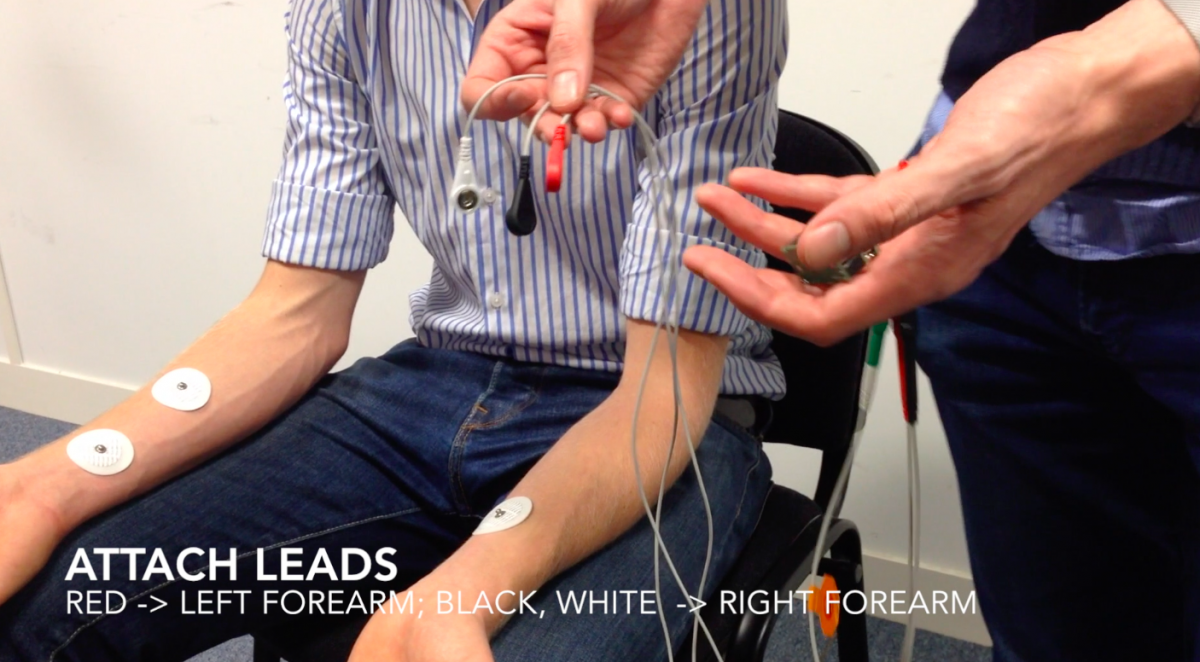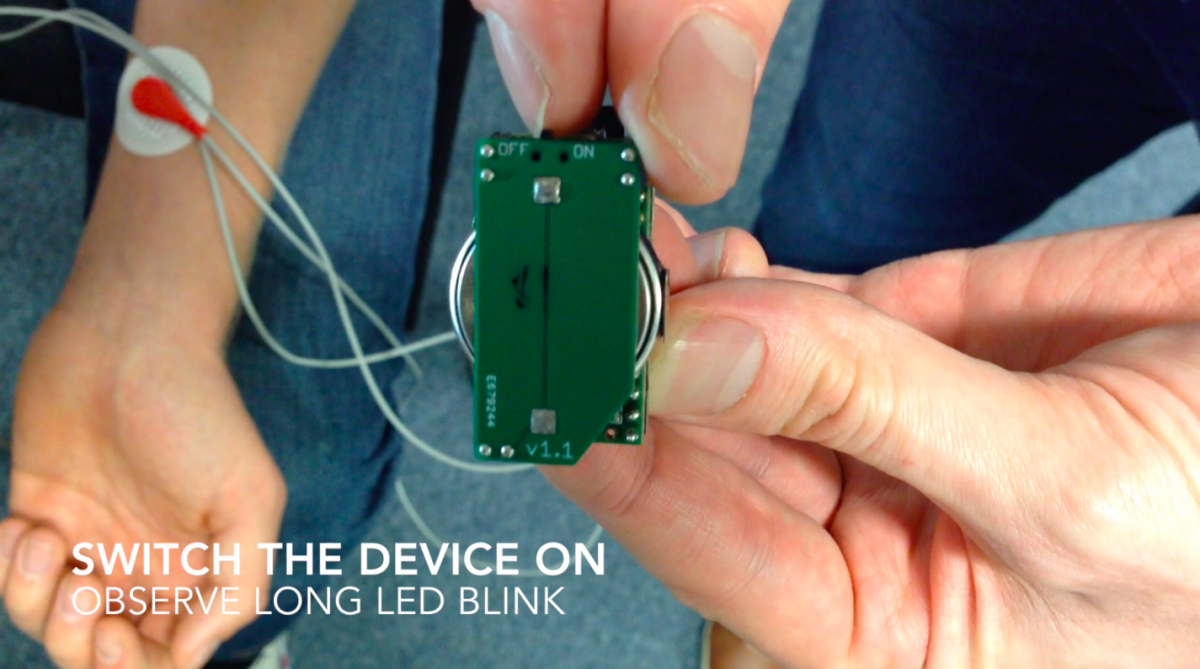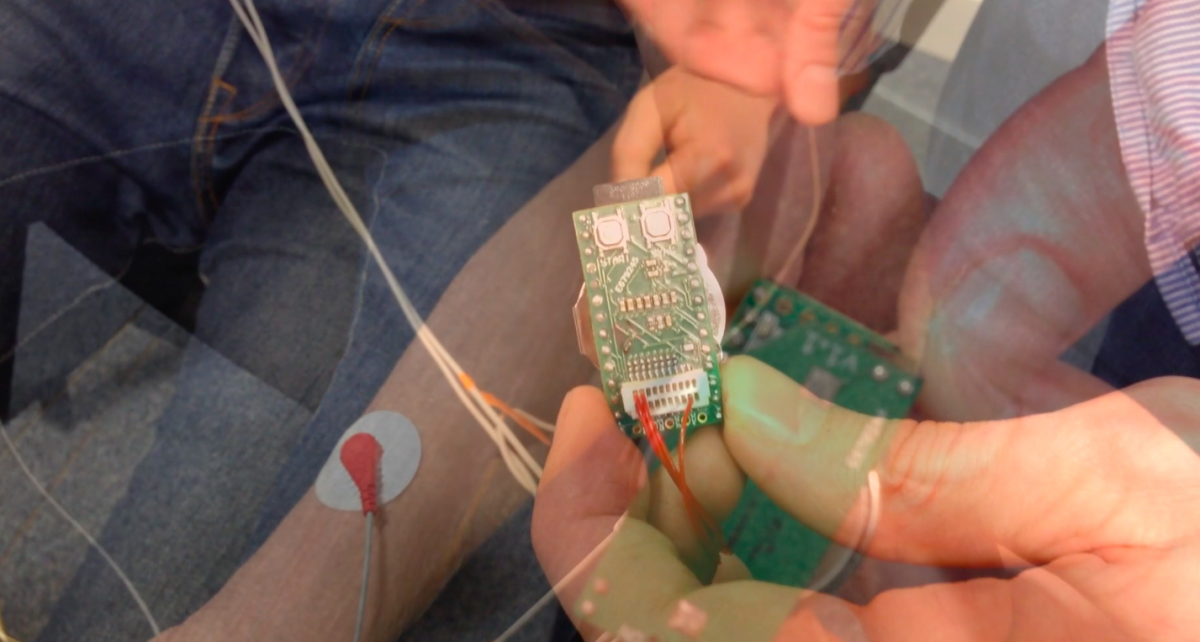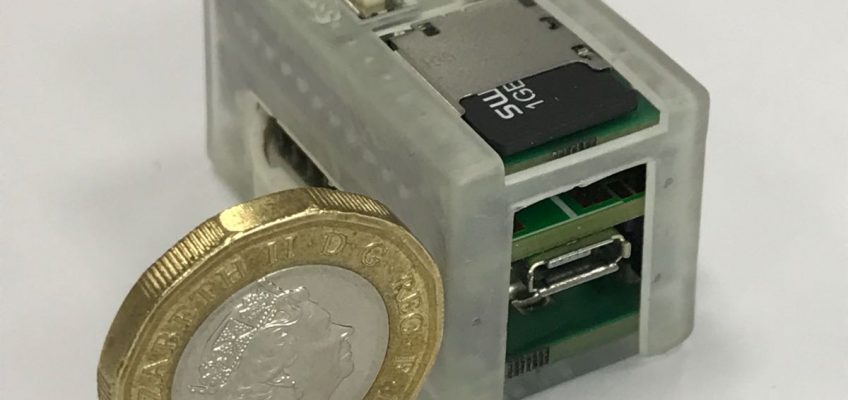A new app could increase student engagement through innovative use of wearable tech.
An Imperial academic has found a new way to use undergraduate students’ physiological signals to better understand complex, maths-heavy subjects.
Prof Danilo Mandic, from Imperial’s Department of Electrical and Electronic Engineering, asked his students to record their own heart and breathing rates, and use that data to fill out usual mathematics coursework Share on X
Prof Danilo Mandic, from Imperial’s Department of Electrical and Electronic Engineering, asked his students to record their own heart and breathing rates, and use that data to fill out usual mathematics coursework. iAMP is a device that measures students’ heart and breathing rates via wrist electrodes. An accompanying computer app gives onscreen instructions on how and when to gather data, before displaying the measurements and using them in their equations.
“We hope to develop and apply the tech to other analytically and data -heavy subjects like computer science and medicine, or even business,” Professor Mandic says. “Exploring the multidisciplinary, ethical and societal aspects of our work will help students to challenge themselves, engage their curiosity, and have the confidence to be intellectually adventurous.”

At least 85 per cent of the students involved described increased intellectual satisfaction and engagement as a result of the idea. Professor Mandic hopes to apply the technology to other analytically and data -heavy subjects like computer science and medicine, or even business. He also hopes to inspire other educators to get creative with their teaching methods.
“Having a coursework which included real world signals like the ECG, voice and sound files made the course so much more tangible and enjoyable,” one student said.
Professor Mandic studied whether using this system would enrich student intellectual curiosity and engagement, and perhaps even performance, especially in maths-heavy modules. The approach could also help keep the curriculum current by synching it to technological and educational developments.
At least 85 per cent of the students involved described increased intellectual satisfaction and engagement as a result of the idea Share on X
The body as a unique dataset
Professor Anthony Constantinides, who pioneered the Signal Processing discipline at Imperial’s Department of Electrical and Electronic Engineering, stated that the technique of engaging students in curiosity-driven learning helped to broaden students’ perspective on research and employment opportunities in next-generation health care.
Professor Mandic’s team will continue to enhance the technique with more data, for example on movement and neural signals. They also noted the need for ethical and privacy considerations in future studies, as well as developing a protocol when data indicates potential health issues in students.
Overall, the study could help to bring biopresence technology into the classroom more widely at both University and late secondary school level. The approach is now being adopted in UC Berkeley, USA, and University of Lyon, France.
The study could help to bring biopresence technology into the classroom Share on XTo find out how to leverage VR/AR/MR in your enterprise, Tech Trends offers bespoke Virtual Reality Consultancy support
Alice Bonasio is a VR Consultant and Tech Trends’ Editor in Chief. She also regularly writes for Fast Company, Ars Technica, Quartz, Wired and others. Connect with her on LinkedIn and follow @alicebonasio and @techtrends_tech on Twitter.









